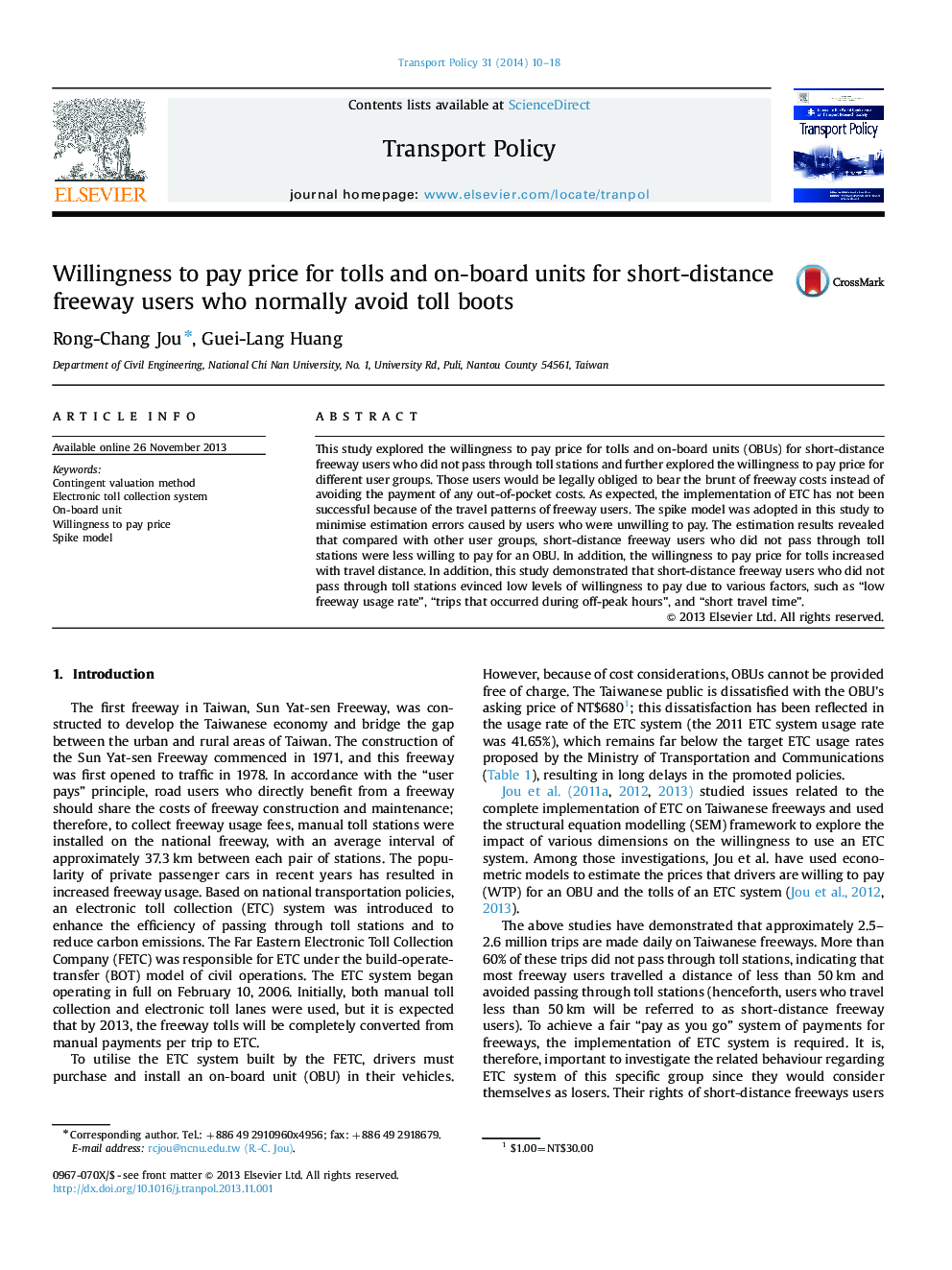| Article ID | Journal | Published Year | Pages | File Type |
|---|---|---|---|---|
| 7498052 | Transport Policy | 2014 | 9 Pages |
Abstract
This study explored the willingness to pay price for tolls and on-board units (OBUs) for short-distance freeway users who did not pass through toll stations and further explored the willingness to pay price for different user groups. Those users would be legally obliged to bear the brunt of freeway costs instead of avoiding the payment of any out-of-pocket costs. As expected, the implementation of ETC has not been successful because of the travel patterns of freeway users. The spike model was adopted in this study to minimise estimation errors caused by users who were unwilling to pay. The estimation results revealed that compared with other user groups, short-distance freeway users who did not pass through toll stations were less willing to pay for an OBU. In addition, the willingness to pay price for tolls increased with travel distance. In addition, this study demonstrated that short-distance freeway users who did not pass through toll stations evinced low levels of willingness to pay due to various factors, such as “low freeway usage rate”, “trips that occurred during off-peak hours”, and “short travel time”.
Related Topics
Social Sciences and Humanities
Social Sciences
Geography, Planning and Development
Authors
Rong-Chang Jou, Guei-Lang Huang,
